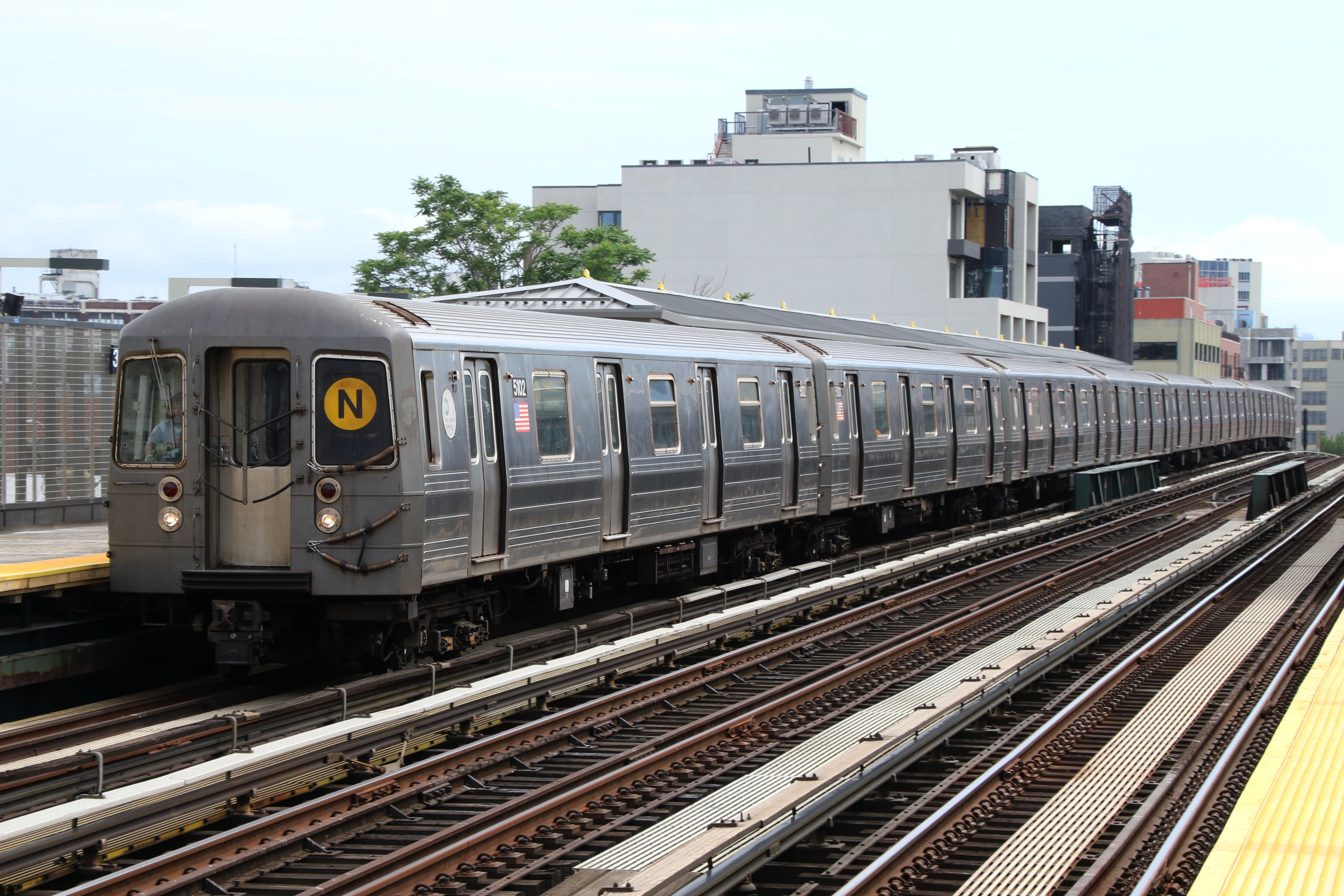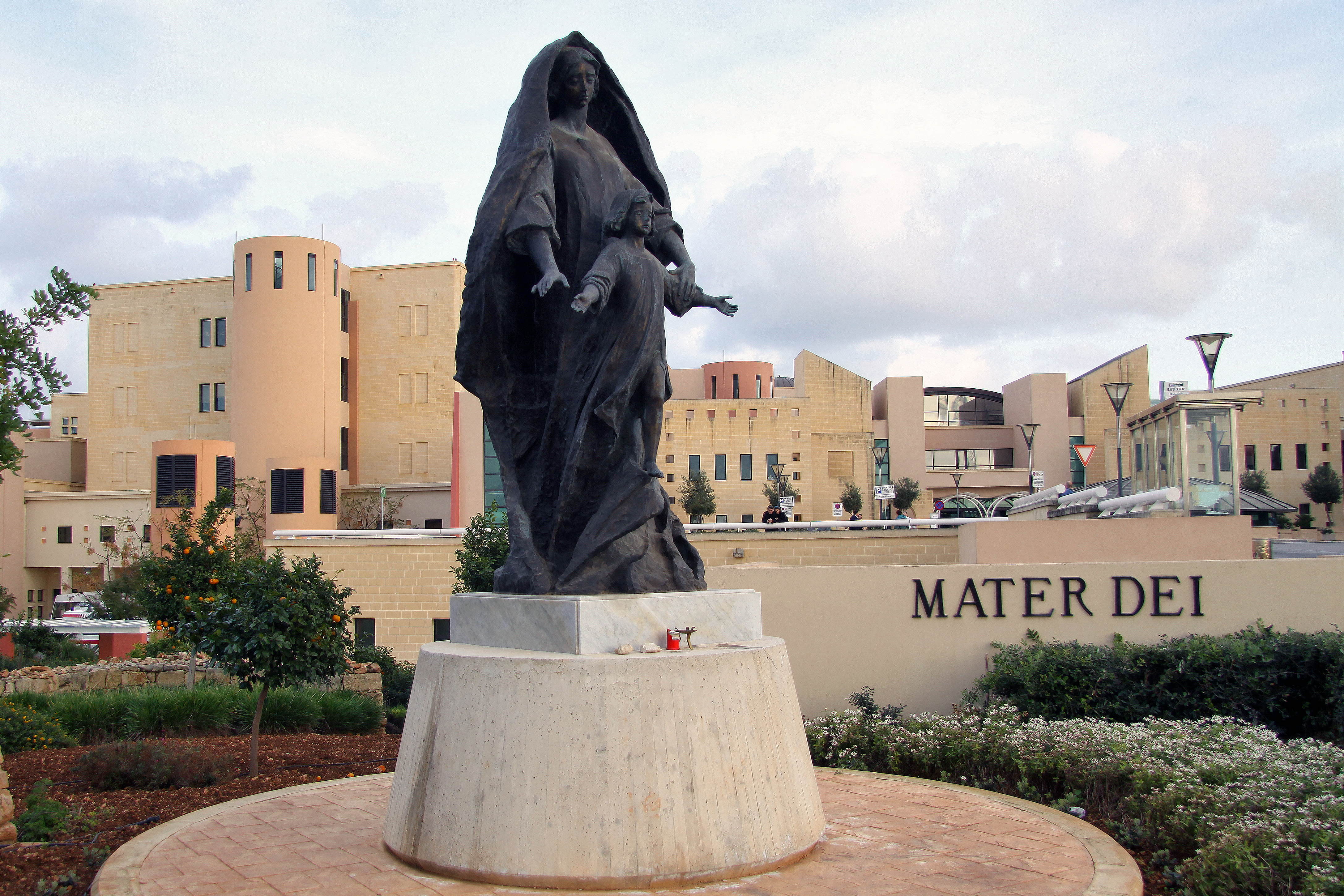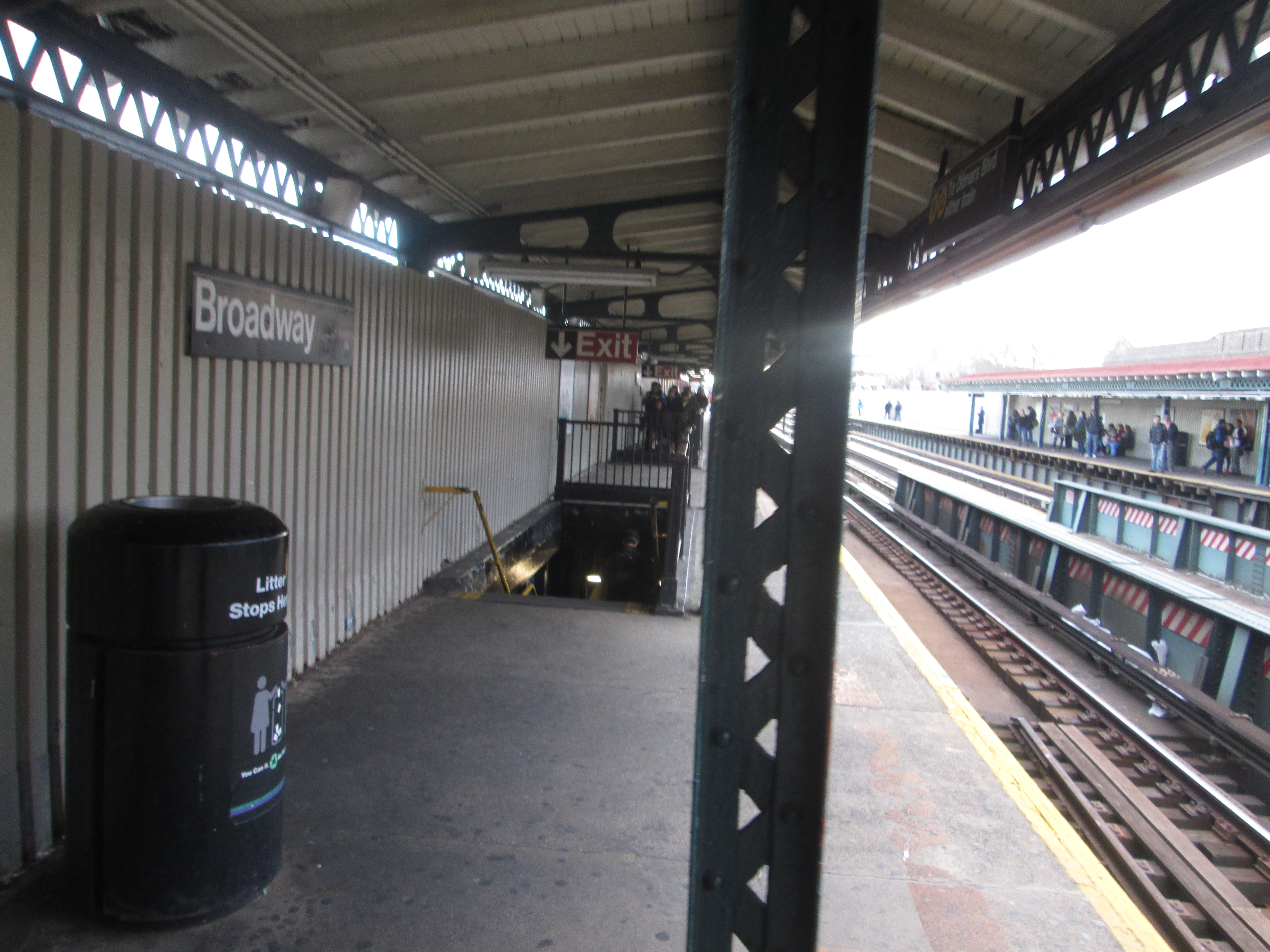|
36th Avenue (BMT Astoria Line)
The 36th Avenue station (formerly known as 36th Avenue–Washington Avenue station) is a local station on the BMT Astoria Line of the New York City Subway. It is located at the intersection of 36th Avenue and 31st Street in Astoria, Queens. The station is served by the N train at all times, as well as by the W train on weekdays. The station opened along with the rest of the Astoria Line in 1917. Its platforms were extended in 1950, and the station was renovated in 2017 and 2018. History This station opened on February 1, 1917, along with the rest of the Astoria Line, which was originally part of the IRT, as a spur off the IRT Queensboro Line, which is now the IRT Flushing Line. Trains ran between Grand Central and Astoria. On July 23, 1917, the Queensboro Bridge spur of the elevated IRT Second Avenue Line opened. At that time, all elevated trains to Queensboro Plaza used the Astoria Line while all subway trains used the IRT Flushing Line, though this was later chang ... [...More Info...] [...Related Items...] OR: [Wikipedia] [Google] [Baidu] |
Queens
Queens is a borough of New York City, coextensive with Queens County, in the U.S. state of New York. Located on Long Island, it is the largest New York City borough by area. It is bordered by the borough of Brooklyn at the western tip of Long Island to its west, and Nassau County to its east. Queens also shares water borders with the boroughs of Manhattan, the Bronx, and Staten Island (via the Rockaways). With a population of 2,405,464 as of the 2020 census, Queens is the second most populous county in the State of New York, behind Kings County (Brooklyn), and is therefore also the second most populous of the five New York City boroughs. If Queens became a city, it would rank as the fifth most-populous in the U.S. after New York City, Los Angeles, Chicago, and Houston. Approximately 47% of the residents of Queens are foreign-born. Queens is the most linguistically diverse place on Earth and is one of the most ethnically diverse counties in the United States. Queens was ... [...More Info...] [...Related Items...] OR: [Wikipedia] [Google] [Baidu] |
Queensboro Plaza Station
The Queensboro Plaza station (originally named Queensboro Bridge Plaza station or simply Bridge Plaza station) is an elevated New York City Subway station at Queens Plaza (originally called Queensboro Bridge Plaza or simply Bridge Plaza) in the Long Island City neighborhood of Queens. It is near the east end of the Queensboro Bridge, with Queens Boulevard running east from the plaza. The station is served by the 7 and N trains at all times, the W train on weekdays, and the <7> train rush hours in the peak direction. Queensboro Plaza was originally built in 1916–1917 as part of the Dual Contracts between the Brooklyn–Manhattan Transit Corporation (BMT) and the Interborough Rapid Transit Company (IRT). The station initially had eight tracks to allow BMT and IRT passengers to transfer between the Astoria, Flushing, and Second Avenue elevated lines. The northern section of the station was closed in the late 1940s and demolished in 1964. Queensboro Plaza now ... [...More Info...] [...Related Items...] OR: [Wikipedia] [Google] [Baidu] |
Turnstile
A turnstile (also called a turnpike, gateline, baffle gate, automated gate, turn gate in some regions) is a form of gate which allows one person to pass at a time. A turnstile can be configured to enforce one-way human traffic. In addition, a turnstile can restrict passage only to people who insert a coin, ticket, pass, or other method of payment. Modern turnstiles incorporate biometrics, including retina scanning, fingerprints, and other individual human characteristics which can be scanned. Thus a turnstile can be used in the case of paid access (sometimes called a faregate or ticket barrier when used for this purpose), for example to access public transport, a pay toilet, or to restrict access to authorized people, for example in the lobby of an office building. History Turnstiles were originally used, like other forms of stile, to allow human beings to pass while keeping sheep or other livestock penned in. The use of turnstiles in most modern applications has been cre ... [...More Info...] [...Related Items...] OR: [Wikipedia] [Google] [Baidu] |
Transite
Transite originated as a brand that Johns Manville, an American company, created in 1929 for a line of asbestos-cement products, including boards and pipes. In time it became a generic term for other companies' similar asbestos-cement products, and later an even more generic term for a hard, fireproof composite material, fibre cement boards, typically used in wall construction. It can also be found in insulation, siding, roof gutters, and cement wallboard. The more prevalent transite found in wall construction and roofing tiles for example, will last anywhere from 50 years to over 100 years. The use of asbestos, a proven carcinogen, to manufacture transite was phased out in the 1980s. It was replaced by crystalline silica, which the International Agency for Research on Cancer has classified as being carcinogenic to humans (Class 1). Crystalline silica is also known to cause silicosis, a non-cancerous lung disease. Historic Originally, transite had between 12-50% of asbestos fi ... [...More Info...] [...Related Items...] OR: [Wikipedia] [Google] [Baidu] |
Maureen McQuillan
Maureen McQuillan is a New York-based contemporary artist, who, though primarily a painter, has worked in a range of mediums that include drawing, painting, camera-less photography, and sculptural installation. Across disciplines, she uses color and flowing line to create her complexly patterned abstractions. Process and themes ''Recent work'' McQuillan creates kaleidoscopic abstractions with overlapping layers of translucent color and rippling lines. She takes a systematic approach, applying the ink according to a rigid set of her own rules akin to the structure of a line of music or computer code. In these works, she investigates the subjectivity of color, and how technology mediates and defines our modern perception of it now that the natural phenomenon is so often translated through printer ink or pixels. While the pieces are handmade, her process results in something that can feel digitally produced. The finished pieces are reminiscent of cellular structure under a microsc ... [...More Info...] [...Related Items...] OR: [Wikipedia] [Google] [Baidu] |
Skanska
Skanska AB () is a multinational construction and development company based in Sweden. Skanska is the fifth-largest construction company in the world according to ''Construction Global'' magazine. Notable Skanska projects include renovation of the United Nations Headquarters, the World Trade Center Transportation Hub project, Moynihan Train Hall, 30 St Mary Axe, MetLife Stadium, Mater Dei Hospital, among others. History Aktiebolaget Skånska Cementgjuteriet (Scanian Cement Casting Ltd) was established in Malmö, Sweden, in 1887 by Rudolf Fredrik Berg and started by manufacturing concrete products.Skanska: History It quickly diversified into a construction company and within ten years the company received its first international order. The company played an important role in building Sweden's infrastruct ... [...More Info...] [...Related Items...] OR: [Wikipedia] [Google] [Baidu] |
39th Avenue (BMT Astoria Line)
39th Avenue may refer to: * 39 Avenue station (Calgary), a light rail station in Calgary, Alberta, Canada * 39th Avenue station (BMT Astoria Line), a New York City Subway station {{disambig ... [...More Info...] [...Related Items...] OR: [Wikipedia] [Google] [Baidu] |
Broadway (BMT Astoria Line)
The Broadway station is a local station on the BMT Astoria Line of the New York City Subway. It is located above 31st Street at Broadway in Astoria, Queens. The station is served by the N train at all times, as well as by the W train on weekdays. History This station opened on February 1, 1917, along with the rest of the Astoria Line, which was originally part of the IRT, as a spur off the IRT Queensboro Line, which is now the IRT Flushing Line. Trains ran between Grand Central and Astoria. On July 23, 1917, the Queensboro Bridge spur of the elevated IRT Second Avenue Line opened. At that time, all elevated trains to Queensboro Plaza used the Astoria Line while all subway trains used the IRT Flushing Line, though this was later changed with trains alternating between branches. This station started to be served by BMT shuttles using elevated cars on April 8, 1923. The city government took over the BMT's operations on June 1, 1940, and the IRT's operations on June 12, 1 ... [...More Info...] [...Related Items...] OR: [Wikipedia] [Google] [Baidu] |
30th Avenue (BMT Astoria Line)
The 30th Avenue station (formerly 30th Avenue–Grand Avenue station) is a local station on the BMT Astoria Line of the New York City Subway. It is located at 30th Avenue and 31st Street in Astoria. The station is served by the N train at all times, as well as by the W train on weekdays. History This station opened on February 1, 1917, along with the rest of the Astoria Line, which was originally part of the IRT, as a spur off the IRT Queensboro Line, which is now the IRT Flushing Line. Trains ran between Grand Central and Astoria. On July 23, 1917, the Queensboro Bridge spur of the elevated IRT Second Avenue Line opened. At that time, all elevated trains to Queensboro Plaza used the Astoria Line while all subway trains used the IRT Flushing Line, though this was later changed with trains alternating between branches. This station started to be served by BMT shuttles using elevated cars on April 8, 1923. The city government took over the BMT's operations on June ... [...More Info...] [...Related Items...] OR: [Wikipedia] [Google] [Baidu] |
Enhanced Station Initiative
Since the late 20th century, the Metropolitan Transportation Authority has started several projects to maintain and improve the New York City Subway. Some of these projects, such as subway line automation, proposed platform screen doors, the FASTRACK maintenance program, and infrastructural improvements proposed in 2015–2019 Capital Program, contribute toward improving the system's efficiency. Others, such as train-arrival "countdown clocks", "Help Point" station intercoms, "On the Go! Travel Station" passenger kiosks, wireless and cellular network connections in stations, MetroCard fare payment alternatives, and digital ads, are meant to benefit individual passengers. Yet others, including the various methods of subway construction, do not directly impact the passenger interface, but are used to make subway operations efficient. In the mid-1990s, it started converting the BMT Canarsie Line to use communications-based train control, using a moving block signal system that all ... [...More Info...] [...Related Items...] OR: [Wikipedia] [Google] [Baidu] |
Metropolitan Transportation Authority
The Metropolitan Transportation Authority (MTA) is a public benefit corporation responsible for public transportation in the New York City metropolitan area of the U.S. state of New York. The MTA is the largest public transit authority in the United States, serving 12 counties in Downstate New York, along with two counties in southwestern Connecticut under contract to the Connecticut Department of Transportation, carrying over 11 million passengers on an average weekday systemwide, and over 850,000 vehicles on its seven toll bridges and two tunnels per weekday. History Founding In February 1965, New York Governor Nelson Rockefeller suggested that the New York State Legislature create an authority to purchase, operate, and modernize the Long Island Rail Road (LIRR). The LIRR, then a subsidiary of the Pennsylvania Railroad (PRR), had been operating under bankruptcy protection since 1949. The proposed authority would also have the power to make contracts or arrangements with o ... [...More Info...] [...Related Items...] OR: [Wikipedia] [Google] [Baidu] |
MTA NYC Subway N Train Arriving At 36th Ave
MTA may refer to: Organizations Transportation * Metropolitan Transportation Authority, the public transport agency in the metropolitan area of New York City, United States * Metropolitan Transit Authority (other), which may refer to several public transport agencies in other American cities * Flint Mass Transportation Authority, Genesee County, Michigan * Maine Turnpike Authority, Maine * Manchester Transit Authority, New Hampshire * Maryland Transit Administration * Massachusetts Bay Transportation Authority, formerly Metropolitan Transit Authority * Massachusetts Turnpike Authority * Mendocino Transit Authority, California * Mountain Ash railway station, Wales, National Rail station code * Nashville Metropolitan Transit Authority, Tennessee * San Francisco Municipal Transportation Agency, California *Los Angeles County Metropolitan Transportation Authority * Mersin-Tarsus-Adana Railway, a defunct Ottoman railway company Education * Hungarian Academy of Sciences (''Magy ... [...More Info...] [...Related Items...] OR: [Wikipedia] [Google] [Baidu] |








.jpg)
.jpeg)